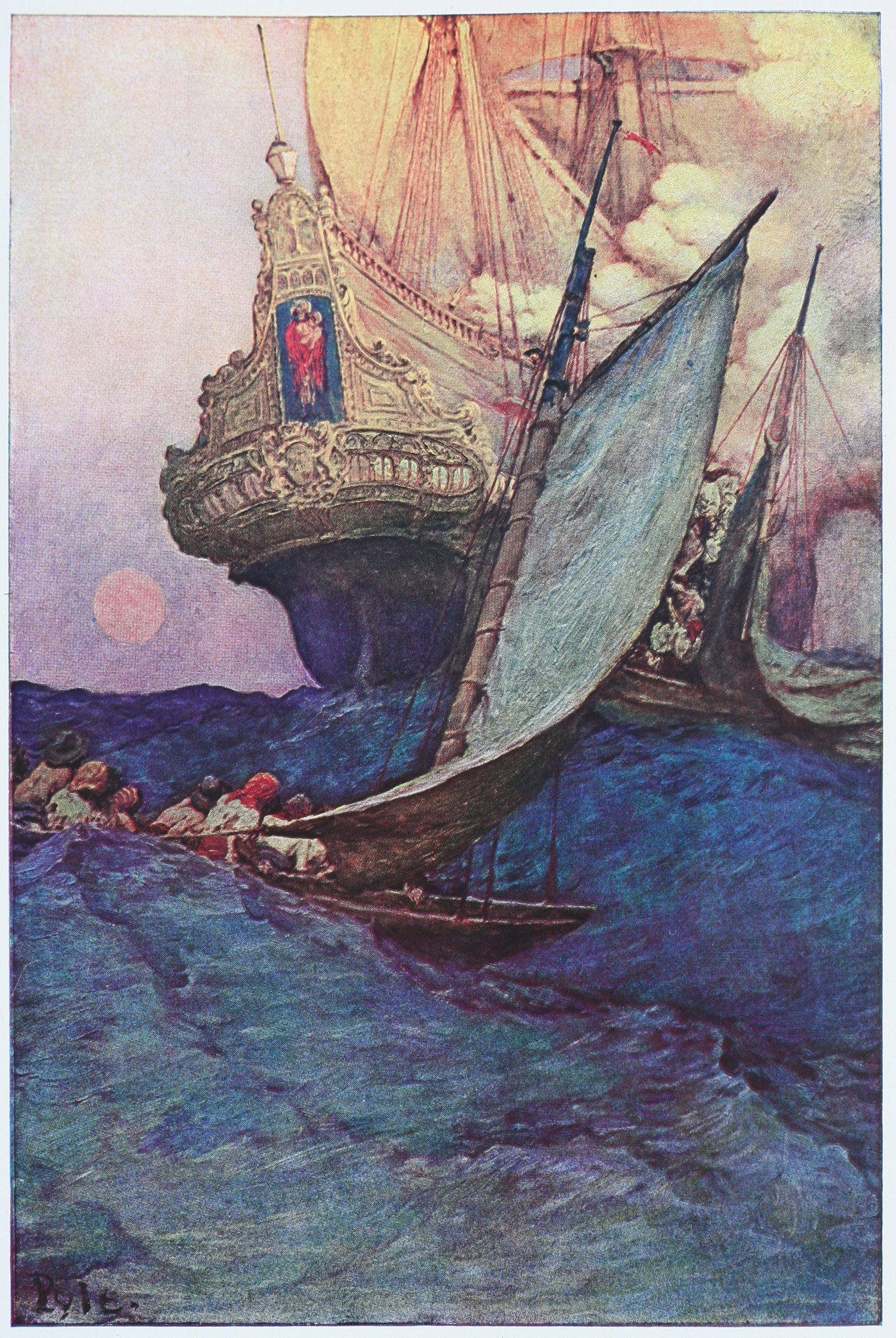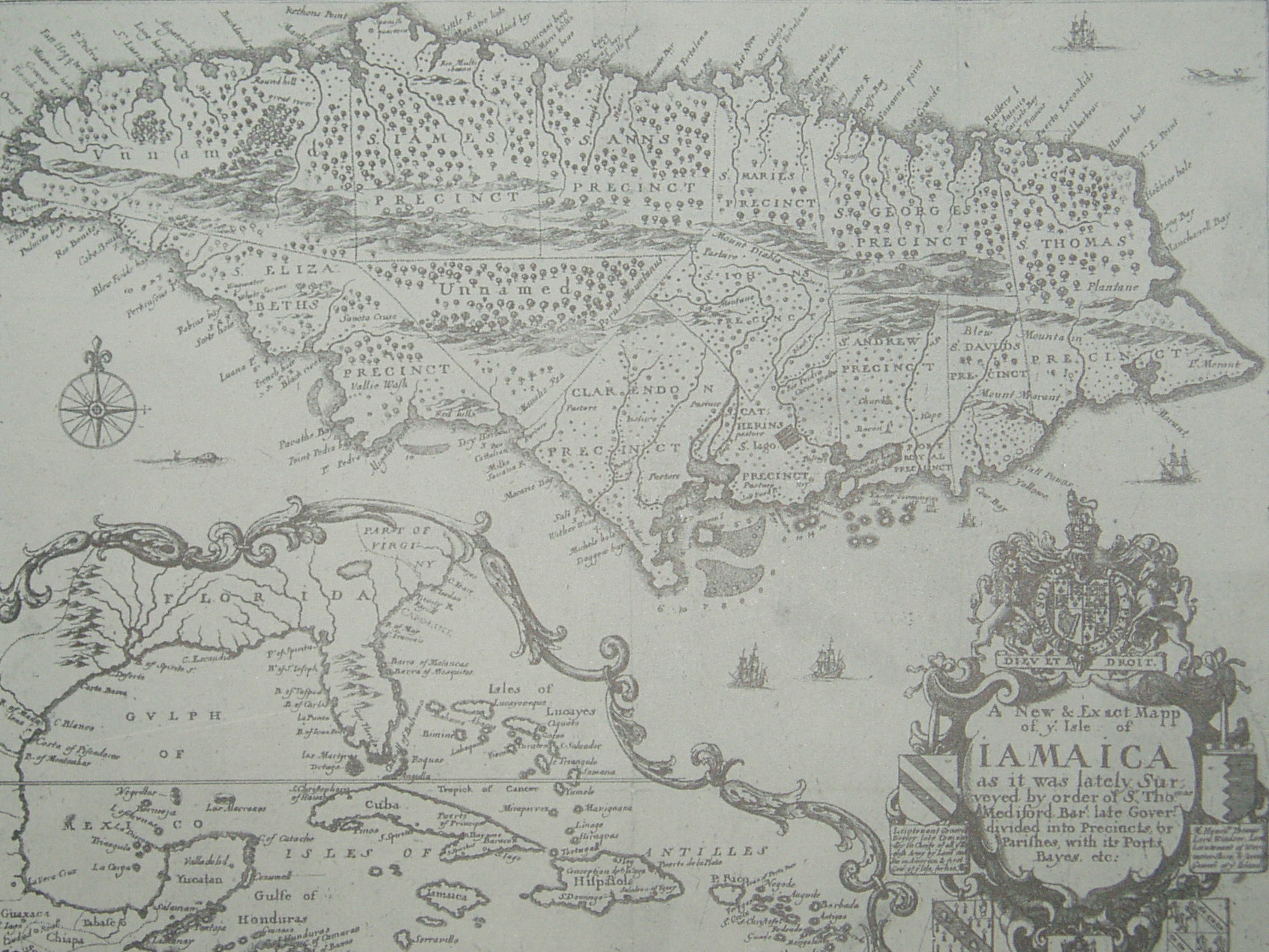|
Laurens Prins
Laurens Prins, anglicized as Lawrence Prince,Marley, David. ''Wars of the Americas: A Chronology of Armed Conflict in the New World, 1492 to the Present''. Santa Barbara, California: ABC-CLIO, 1998. (pp. 151, 158, 172) (c. 1630s, Amsterdam – after 1717) was a 17th-century Dutch buccaneer, privateer and an officer under Captain Sir Henry Morgan. He and Major John Morris led one of the columns against Panama in 1671. Biography According to Spanish accounts, Lawrence Prince was a Dutchman from Amsterdam who arrived in the Caribbean in the late 1650s. In 1659, he was one of four men, including John Morris and Robert Searle, who bought a captured Spanish prize from Commodore Christopher Myngs following his ten-week voyage. Prior to joining Morgan's forces at Port Royal in November 1670, he had previously sailed up to Rio Magdalena intending to raid the town of Mompos located inland. Prince was forced to retreat, however, when they were surprised by cannon fire from a recently b ... [...More Info...] [...Related Items...] OR: [Wikipedia] [Google] [Baidu] |
Buccaneer
Buccaneers were a kind of privateers or free sailors particular to the Caribbean Sea during the 17th and 18th centuries. First established on northern Hispaniola as early as 1625, their heyday was from Stuart Restoration, the Restoration in 1660 until about 1688, during a time when governments were not strong enough and did not consistently attempt to suppress them. Originally the name applied to the landless hunters of wild boars and cattle in the largely uninhabited areas of Tortuga (Haiti), Tortuga and Hispaniola. The meat they caught was smoked over a slow fire in little huts the French called ''boucans'' to make ''viande boucanée'' – ''jerked meat'' or ''jerky'' – which they sold to the French corsairs, corsairs who preyed on the (largely Spanish) shipping and settlements of the Caribbean. Eventually the term was applied to the corsairs and (later) privateers themselves, also known as the Brethren of the Coast. Though corsairs, also known as ''filibusters'' or ''freeb ... [...More Info...] [...Related Items...] OR: [Wikipedia] [Google] [Baidu] |
San Juan River (Nicaragua)
The San Juan River (Spanish: ''Río San Juan''), also known as El Desaguadero ("the drain"), is a river that flows east out of Lake Nicaragua into the Caribbean Sea. A large section of the border between Nicaragua and Costa Rica runs on the southern bank of the river. It was part, with the lake, of a proposed route for a Nicaragua Canal in the 19th century. The idea of the project has been revived in the last decade, including the possibility of other routes within the country. The Ecocanal project has obtained a Concession from the National Assembly of Nicaragua to re-open the San Juan River to commercial barge traffic. The Cañas–Jerez Treaty states that Nicaragua owns the waters of the river and that Costa Rica can only use it for commercial navigation on certain parts of the river at Nicaragua's discretion. The San Juan River is home to freshwater bull sharks that also go into Lake Nicaragua in addition to a wide array of marine life and biodiversity. History Before the Pa ... [...More Info...] [...Related Items...] OR: [Wikipedia] [Google] [Baidu] |
Thomas Lynch (governor)
Sir Thomas Lynch (died 1684) was the English governor of Jamaica on three separate occasions in the 17th century (1663–1664, August 1671–November 1674, and lastly 1682–1684). He was also chief justice of Jamaica for a time. Life He was the son of Theophilus Lynch Esq of Rixton Hall in Lancashire (born 1603), fourth son of William Lynch Esq of Cranbrook, Kent, Cranbrook in Kent, and of his wife Judith, eldest daughter of Royal chaplain and Bishop of London John Aylmer (bishop), John Aylmer. He served under Robert Venables in the army which went out to Jamaica in 1655. In January 1661, after a period back in England he was appointed provost-marshal of the island for life. In December 1662 Lynch was lieutenant-colonel of the 5th regiment of militia; in April 1663 was sworn in as a member of council, and in April 1664 elected president of the council in the absence of Sir Charles Lyttelton. In June 1664 Sir Thomas Modyford became governor, and Lynch was again sworn of the counc ... [...More Info...] [...Related Items...] OR: [Wikipedia] [Google] [Baidu] |
Lieutenant
A lieutenant ( , ; abbreviated Lt., Lt, LT, Lieut and similar) is a commissioned officer rank in the armed forces of many nations. The meaning of lieutenant differs in different militaries (see comparative military ranks), but it is often subdivided into senior (first lieutenant) and junior (second lieutenant and even third lieutenant) ranks. In navies, it is often equivalent to the army rank of captain; it may also indicate a particular post rather than a rank. The rank is also used in fire services, emergency medical services, security services and police forces. Lieutenant may also appear as part of a title used in various other organisations with a codified command structure. It often designates someone who is " second-in-command", and as such, may precede the name of the rank directly above it. For example, a "lieutenant master" is likely to be second-in-command to the "master" in an organisation using both ranks. Political uses include lieutenant governor in various g ... [...More Info...] [...Related Items...] OR: [Wikipedia] [Google] [Baidu] |
Juan Perez De Guzman
''Juan'' is a given name, the Spanish and Manx versions of ''John''. It is very common in Spain and in other Spanish-speaking communities around the world and in the Philippines, and also (pronounced differently) in the Isle of Man. In Spanish, the diminutive form (equivalent to ''Johnny'') is , with feminine form (comparable to ''Jane'', ''Joan'', or ''Joanna'') , and feminine diminutive (equivalent to ''Janet'', ''Janey'', ''Joanie'', etc.). Chinese terms * ( or 娟, 隽) 'beautiful, graceful' is a common given name for Chinese women. * () The Chinese character 卷, which in Mandarin is almost homophonic with the characters for the female name, is a division of a traditional Chinese manuscript or book and can be translated as 'fascicle', 'scroll', 'chapter', or 'volume'. Notable people * Juan (footballer, born 1979), Brazilian footballer * Juan (footballer, born 1982), Brazilian footballer * Juan (footballer, born March 2002), Brazilian footballer * Juan (footballer ... [...More Info...] [...Related Items...] OR: [Wikipedia] [Google] [Baidu] |
Rearguard
A rearguard is a part of a military force that protects it from attack from the rear, either during an advance or withdrawal. The term can also be used to describe forces protecting lines, such as communication lines, behind an army. Even more generally, a rearguard action may refer idiomatically to an attempt at preventing something though it is likely too late to be prevented; this idiomatic meaning may apply in either a military- or in a non-military, perhaps-figurative context. Origins The term rearguard (also ''rereward'', ''rearward'') originates from the medieval custom of dividing an army into three ''battles'' or ''wards''; Van, Main (or Middle) and Rear. The Rear Ward usually followed the other wards on the march and during a battle usually formed the rearmost of the three if deployed in column or the left-hand ward if deployed in line. Original usage The commonly accepted definition of a rearguard in military tactics was largely established in the battles of the la ... [...More Info...] [...Related Items...] OR: [Wikipedia] [Google] [Baidu] |
Vanguard (military Tactics)
The vanguard (also called the advance guard) is the leading part of an advancing military formation. It has a number of functions, including seeking out the enemy and securing ground in advance of the main force. History The vanguard derives from the traditional division of a medieval army into three ''battles'' or ''wards''; the Van, the Main (or Middle), and the Rear. The term originated from the medieval French ''avant-garde'', i.e. "the advance guard". The vanguard would lead the line of march and would deploy first on the field of battle, either in front of the other wards or to the right if they deployed in line. The makeup of the vanguard of a 15th century Burgundian army is a typical example. This consisted of *A contingent of foreriders, from whom a forward detachment of scouts was drawn; *The main body of the vanguard, accompanied by civil officials and trumpeters to carry messages and summon enemy towns and castles to surrender; and *A body of workmen under the d ... [...More Info...] [...Related Items...] OR: [Wikipedia] [Google] [Baidu] |
Edward Collier (buccaneer)
Edward Collier was an English buccaneer who served as Sir Henry Morgan's second-in-command throughout much of his expeditions against Spain during the mid-17th century. In command of one of the ships which took part in Sir Henry Morgan's raid on Portobello in 1668, he was given command of the 34-gun ''Oxford'' with a commission as a pirate hunter before the end of the year and eventually captured Captain la Veven and his ship, the ''Satisfaction.'' Rejoining Morgan in his later raids on Maracaibo and Gibraltar, Venezuela, an explosion aboard his ship would kill many of the officers in the expedition before his ship was sunk. Reportedly despondent over the loss of his ship, Collier left the fleet and was allowed to take command of the ''Satisfaction'' spending the next 18 months off the Mexican coastline. Eventually he was persuaded to join Morgan as he was planning his raid on Panama September 1670 and appointed vice-admiral of the expedition. As the expedition was being prepare ... [...More Info...] [...Related Items...] OR: [Wikipedia] [Google] [Baidu] |
Spain
, image_flag = Bandera de España.svg , image_coat = Escudo de España (mazonado).svg , national_motto = ''Plus ultra'' (Latin)(English: "Further Beyond") , national_anthem = (English: "Royal March") , image_map = , map_caption = , image_map2 = , capital = Madrid , coordinates = , largest_city = Madrid , languages_type = Official language , languages = Spanish language, Spanish , ethnic_groups = , ethnic_groups_year = , ethnic_groups_ref = , religion = , religion_ref = , religion_year = 2020 , demonym = , government_type = Unitary state, Unitary Parliamentary system, parliamentary constitutional monarchy , leader_title1 = Monarchy of Spain, Monarch , leader_name1 = Felipe VI , leader_title2 = Prime Minister of Spain ... [...More Info...] [...Related Items...] OR: [Wikipedia] [Google] [Baidu] |
Thomas Modyford
Colonel Sir Thomas Modyford, 1st Baronet (c. 1620 – 1 September 1679) was a planter of Barbados and Governor of Jamaica from 1664 to 1671. Early life Modyford was the son of a mayor of Exeter with family connections to the Duke of Albemarle. Barbados Modyford emigrated to Barbados as a young man with other family members in 1647, in the opening stages of the English Civil War. He had £1,000 for a down payment on a plantation and £6,000 to commit in the next three years. Modyford soon was dominant in Barbados island politics, rising to be speaker of the House of Assembly in Barbados during the reign of King Charles II, and factor for the Royal Adventurers Trading to Africa, who had a monopoly in the slave trade to the islands. By 1647, Modyford had made a fortune from sugar and slavery. In 1651, Modyford sided with the Cavaliers under Lord Francis Willoughby, 5th Baron Willoughby of Parham, as they defied Oliver Cromwell, but when a force was despatched under the com ... [...More Info...] [...Related Items...] OR: [Wikipedia] [Google] [Baidu] |

